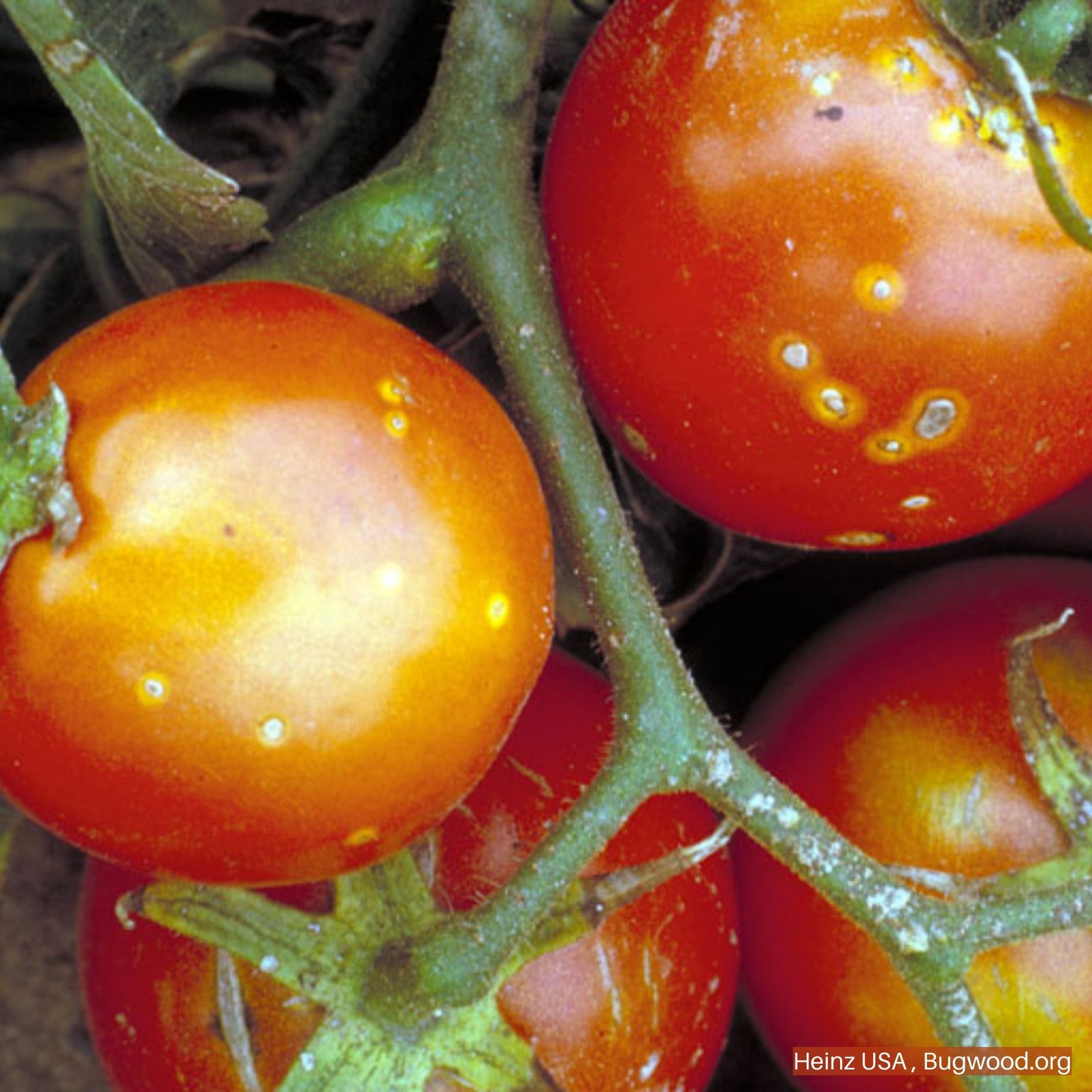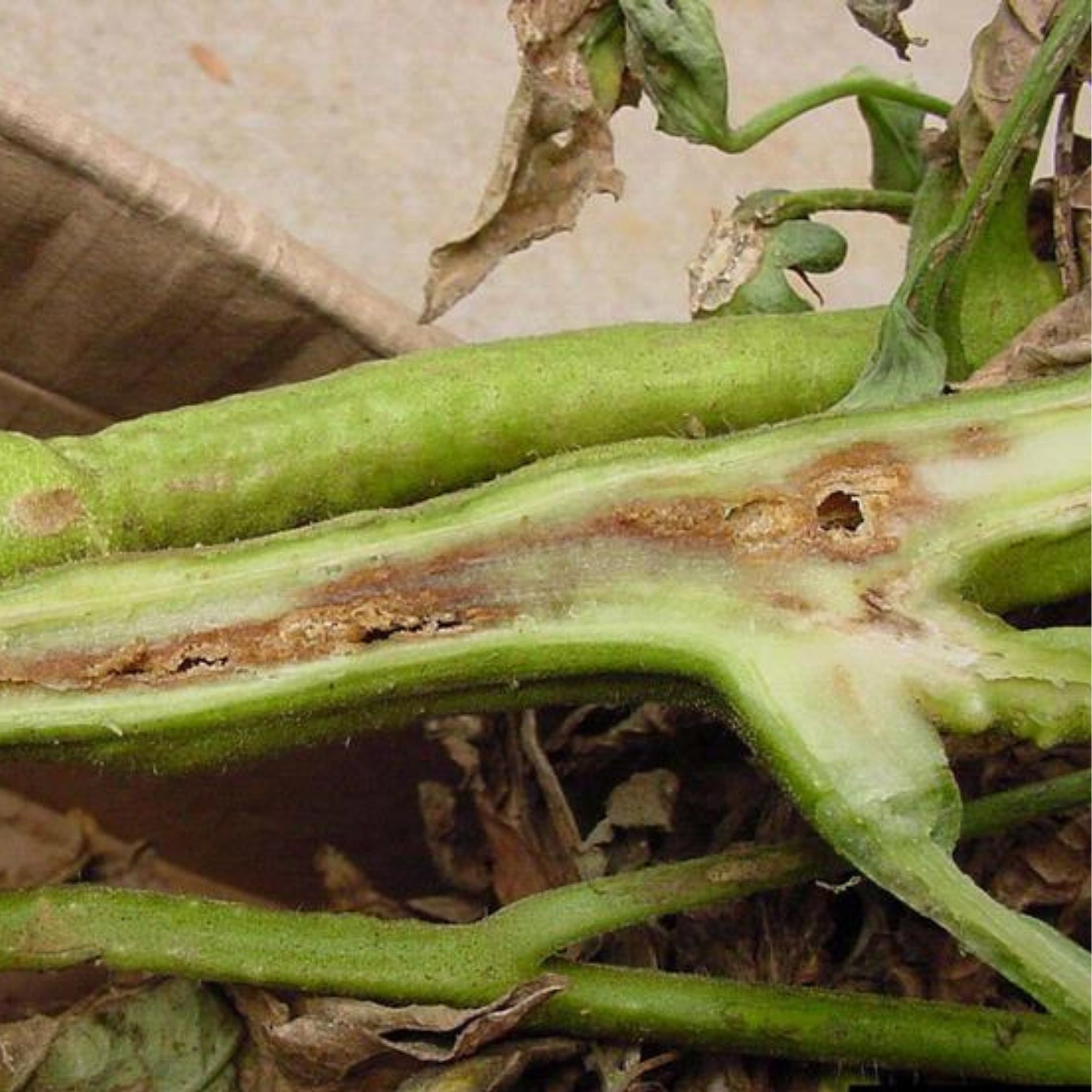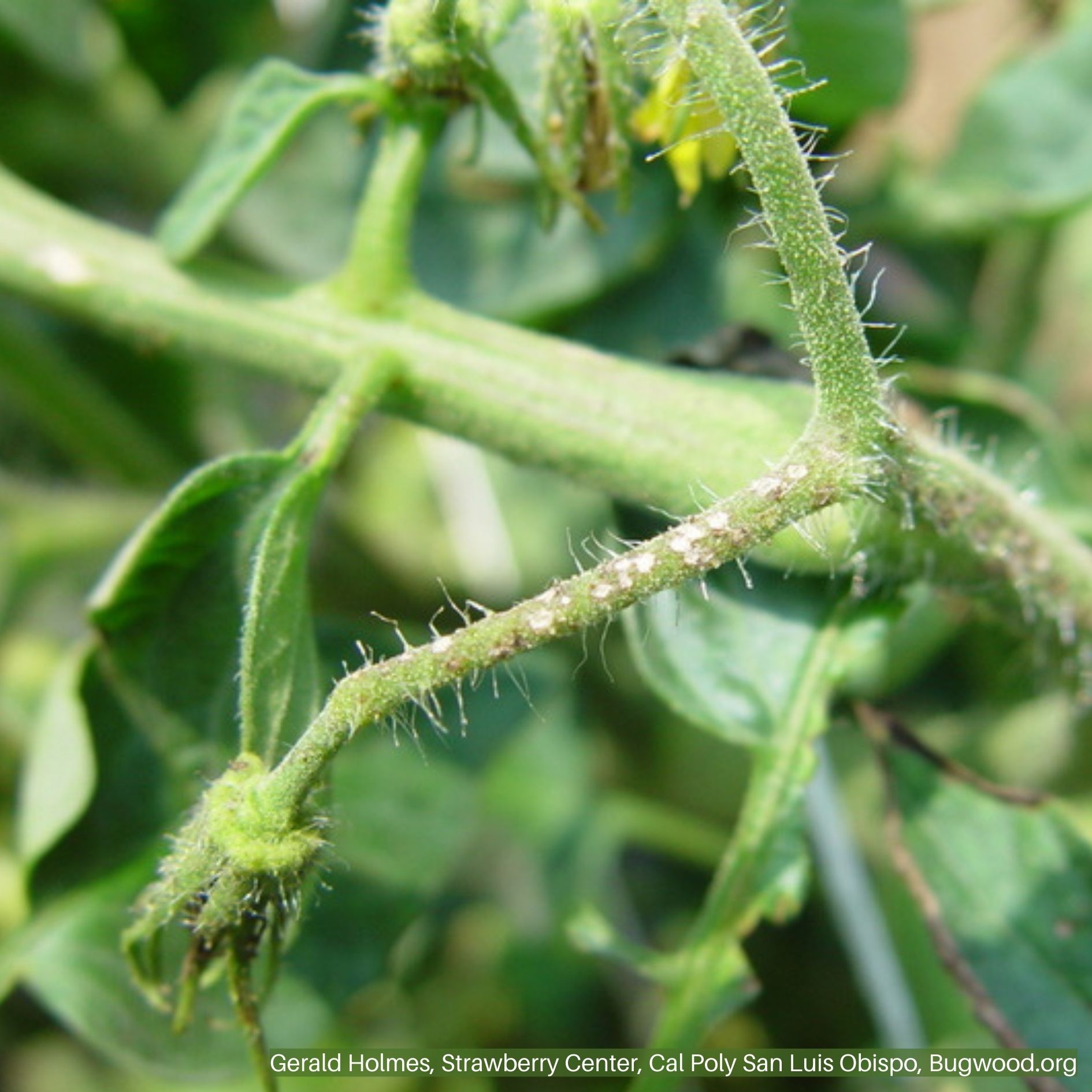Bacterial Canker
 Bacterial Canker on Tomatoes
Bacterial Canker on Tomatoes Pith Decay Within a Diseased Stem
Pith Decay Within a Diseased Stem Bacterial Cankers on Stem
Bacterial Cankers on Stem Diseased Leaves
Diseased LeavesHOSTS
- Tomato
- Pepper
DESCRIPTION
Bacterial canker disease is caused by Clavibacter michiganensis subsp. michiganensis. Bacterial canker can occur on tomato and pepper, but is generally only economically important on tomato.
BIOLOGY
Clavibacter bacteria are spread on seeds from infected plants, and by using contaminated pruning tools, trays, stakes, and benches. It survives on plant debris for at least two years, and on weeds and volunteer tomatoes. Handling infected plants and then touching healthy plants can spread the bacteria, as does splashing water. The most likely means of spread is during clipping of transplants. One infected out of 10,000 transplants can result in a severe disease outbreak. Some infected seedlings show symptoms and die, but others will remain asymptomatic.
SYMPTOMS
The main symptom is wilting. Young plants will wilt entirely whereas on older plants, wilting starts with just the lower leaves or just leaves on one side, and may end with the entire plant. Cut stems show vascular discoloration. Infected leaves may develop yellow margins, known as “firing”. In most cases, leaf symptoms do not progress to a vascular wilt.
Secondary infections cause spots on leaves and fruit. On fruit, spots are white with a dark center. The bacteria infect fruits through infected flowers or the base of trichomes (hairs on leaves and stems). Wilting symptoms can be mistaken for wilt diseases and samples should be sent to a diagnostic lab to determine the cause. Samples can be submitted to the Utah Plant Pest Diagnostic lab (UPPDL) for identification.
GENERAL MANAGEMENT
- Source disease-free seed.
- Use clean equipment. Equipment such as trays, pots, benches, and pruning tools should be cleaned and disinfected after each use. Tools can be disinfected with a 70% ethanol solution.
- Avoid overwatering. Time irrigation so that leaves are dry in the evening.
- Rotate with non-host crops for three to four years.
- Remove solanaceous weeds.
- Deep plow soil to bury plant debris.
- Copper-based products have been shown to be effective in greenhouse transplant production for processing tomato, but were ineffective in the field after transplanting.

